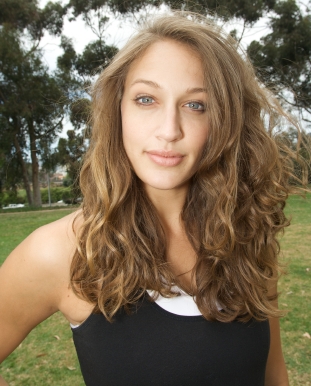
Now, having said all of that, there are two major systems that seem to be the most popular. There is a system called LOIS that uses the hair shape as the defining hair type. For more on LOIS, do a Google on LOIS Hair Type. Until many people switch over to the LOIS system, the standard seems to be the numbering system developed by Andre Walker. In spite of our reservations about hair typing systems, knowing your hair type can allow you talk with others and research products, styles and regimens that are best for your particular hair. And you will often see people saying they have 4a or 4c hair. So you might as well know what it means. The most common systems are ones that categorize the hair based on curl pattern (with a number from 1 for the straightest to 4 for the kinkiest) and on the thickness of the shaft. Keep in mind using thickness here it's the individual thickness of a strand of your hair, not the density of the number of hairs on your head. You could have thick hair shafts and thin hair in terms of numbers of hairs or vice versa. The thickness is rated with a letter ranging from a to c. The following numbers refer to the amount of curl or wave in a hair.
 Type 1 Hair |
Type 1 hair is straight with no discernible curl or wave pattern. This type of hair tends to get oily and is usually shiny. It's shiny because the cuticles lay flat. Its round shape is why it's straight. Oil moves easily from the scalp along the hair shaft. It will require frequent washing to prevent oil build up. Many commercial products are designed for this hair type and are not suitable for more coarse hair. Type 1 hair is often subject to heat for curling and that can lead to damage. |
 Type 2 Hair |
Type 2 hair is hair that has some soft waves, but little to no real curl. It doesn't form rings, just waves. It typically is more coarse than Type 1 hair and will cling to the scalp in long "S" shaped waves. Care is similar to type 1 hair. Type 2 hair might be subjected to heat for straightening which can lead to damage. |
 Type 3 Hair |
Type 3 hair has a more definite "S" pattern to it with the "S" being more tightly formed. The "S's" can become "Os" forming ringlets. Ringlets are often highly desired but difficult to maintain. It will typically be relatively soft and will have less shine than type 1 or 2 hair. It will straighten out or form ringlets when wet but will draw up into a curlier pattern when it dries. This hair type is common among biracial (African and Caucasian mix) people and of Blacks of a more mixed heritage. Type 3 hair will require extra moisture and often the addition of natural oils. It's subject to be washed too often. This is fairly common by caucasian mothers of biracial children. Type 3 hair may be called "frizzy" or "kinky". It should be shampooed less often than types 1 and 2. |
 Type 4 Hair |
Type 4 hair will have kinks and twists and possibly coils but does not form an "S" shape. It may be "L" shaped with bends rather than curves in it. It may form tight coils or "O" shapes (tighter than the "ringlets"formed by Type 3 hair. This type of hair generally doesn't change shape much wet or dry. It can be wiry and usually is fragile. It tends to be drier than other hair types because the bends and twists not only provide points that are more fragile, they actually make it hard for the natural oil (sebum) produced by the scalp to reach the ends of the hair shaft. Because the cuticles do not lay flat on Type 4 hair, the hair tends to be less shiny than Types 1, 2 and 3 and people will often think natural Black hair is dry or dull looking. Most African-Americans have Type 4 hair, which is why this designation alone is not really super descriptive. It seems we are the ones most concerned with categorizing our hair and by this pretty crude system, most of us fall into basically the same category. |
 Chemically Straightened Hair |
Chemically Treated or Permed hair is a hair type we think we have to add. Perming the hair changes the natural structure of the hair creating its own hair type. It is going to be anywhere from a Type 2 to a Type 1 in terms of straightness (depending on the strength of the perm). In spite of the fact the hair shaft is slightly thinner due to the action of the perming chemicals, it might still be a relatively thick hair shaft. It will have more shine than natural hair because the cuticles lay more flat. But, it will tend to be dry. |
The letters a, b and c after the number tell you how thick the hair strand is. a is the thinnest and c is the thickest. One would think the thicker the strand the less fragile the hair. But, actually type 4c hair can be the most fragile because of the curl pattern and the dryness of the hair. Type 4c hair needs to be moisturized regularly, treated gently and should never be brushed with a bristle brush that can catch the bends and break the hair.
Treasured Locks has products to suit all hair types from 2-4 and for chemically straightened hair. What our clients have in common is curly hair that often tends to be dry and/or is fragile. Our products are formulated to be gentle on the hair and to provide moisture.
Protected by Copyscape Plagiarism Checker - Do not copy content from this page.





